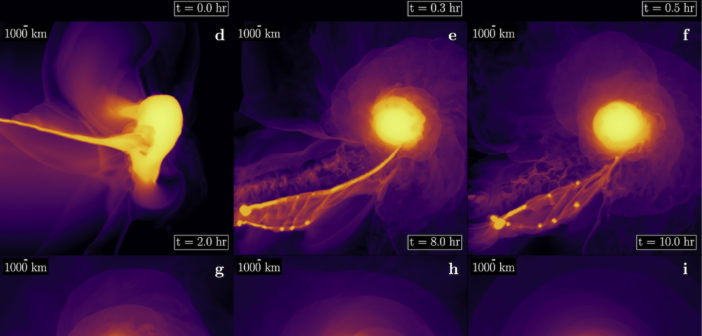The panels in the image above (click the cover image for the full view, or click the video below to watch the animated version) show frames from a dramatic simulation of the collision of a planetary-mass impactor with the proto-Earth in the early solar system. In the chaos that follows the collision, the debris that doesn’t escape settles into a disk around the young Earth — a disk that will later form into our Moon. While the giant impact described here has been simulated in detail in the past, most models have yet to incorporate the effects of magnetic fields into the giant impact and the subsequent evolution of the protolunar disk. In a new study, scientists Patrick Mullen and Charles Gammie (University of Illinois at Urbana-Champaign) develop state-of-the-art simulations that include weak initial magnetic fields. The authors show how these fields are amplified by turbulence in the collision, impacting the how the disk — and, ultimately, the Moon — evolves. To read more about their results, check out the original article below.
Citation
“A Magnetized, Moon-forming Giant Impact,” P. D. Mullen and C. F. Gammie 2020 ApJL 903 L15. doi:10.3847/2041-8213/abbffd


2 Comments
Pingback: Un impacto gigante magnetizado como el que hizo la Luna | Viva Danlí
Pingback: Un impacto gigante magnetizado como el que hizo la Luna - Diario Dia